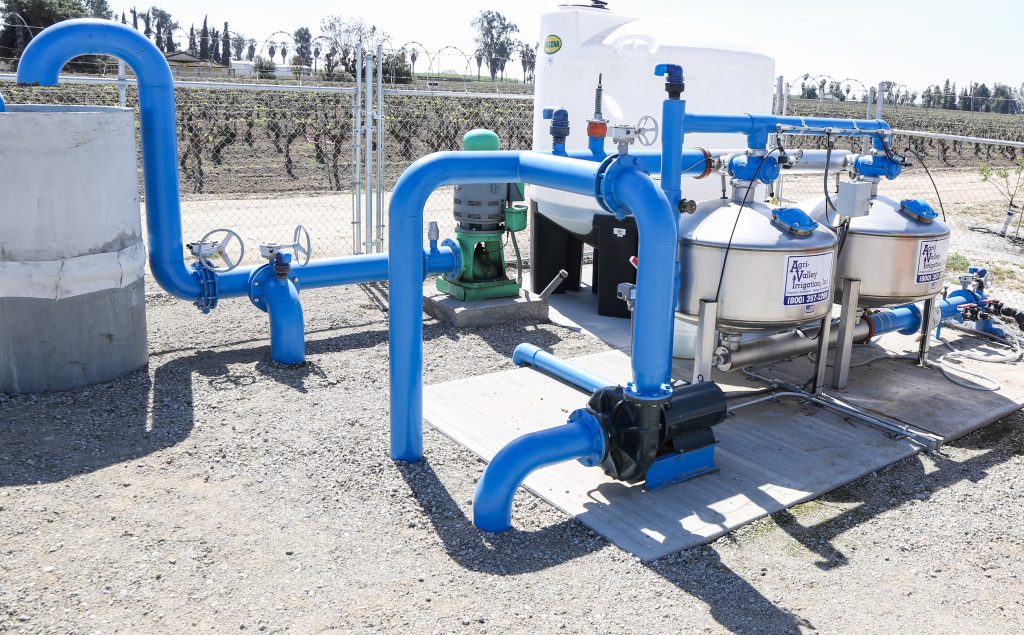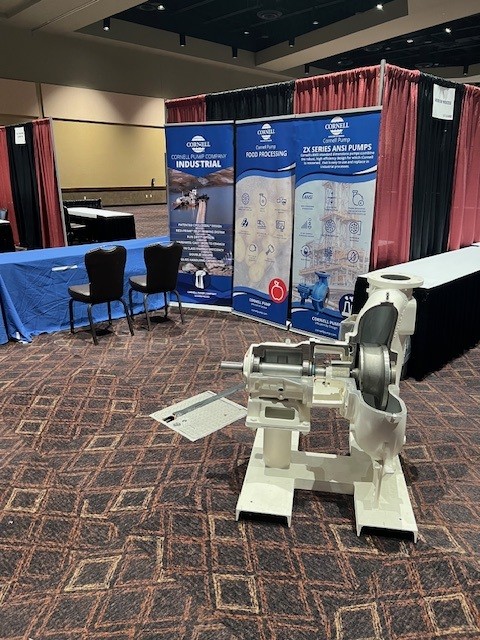 While California may be getting lot of winter rain currently, it is always good to plan for irrigation later in the growing season. Shown is typical pump station in California’s Central Valley. A Cornell 4RB-25 pump is on the system, producing flow of about 500 gallons per minute. This system can irrigate with either well water from the line-shaft turbine pump in the back, or, from district water delivered via an underground concrete pipe and boosted via the Cornell pump. Also seen in the photo, are large stainless steel tanks. They are sand separators and have a capacity of about 250gpm each. This system irrigates grape vines (some visible at the outside the fence.)
While California may be getting lot of winter rain currently, it is always good to plan for irrigation later in the growing season. Shown is typical pump station in California’s Central Valley. A Cornell 4RB-25 pump is on the system, producing flow of about 500 gallons per minute. This system can irrigate with either well water from the line-shaft turbine pump in the back, or, from district water delivered via an underground concrete pipe and boosted via the Cornell pump. Also seen in the photo, are large stainless steel tanks. They are sand separators and have a capacity of about 250gpm each. This system irrigates grape vines (some visible at the outside the fence.)
Whether the grapes are destined for your table as a snack or in renowned California wine, Cornell pumps are there to ensure they grow scrumptiously.
To learn more about our irrigation products, please visit our agricultural offerings on our website: http://www.cornellpump.com/markets/agriculture/



